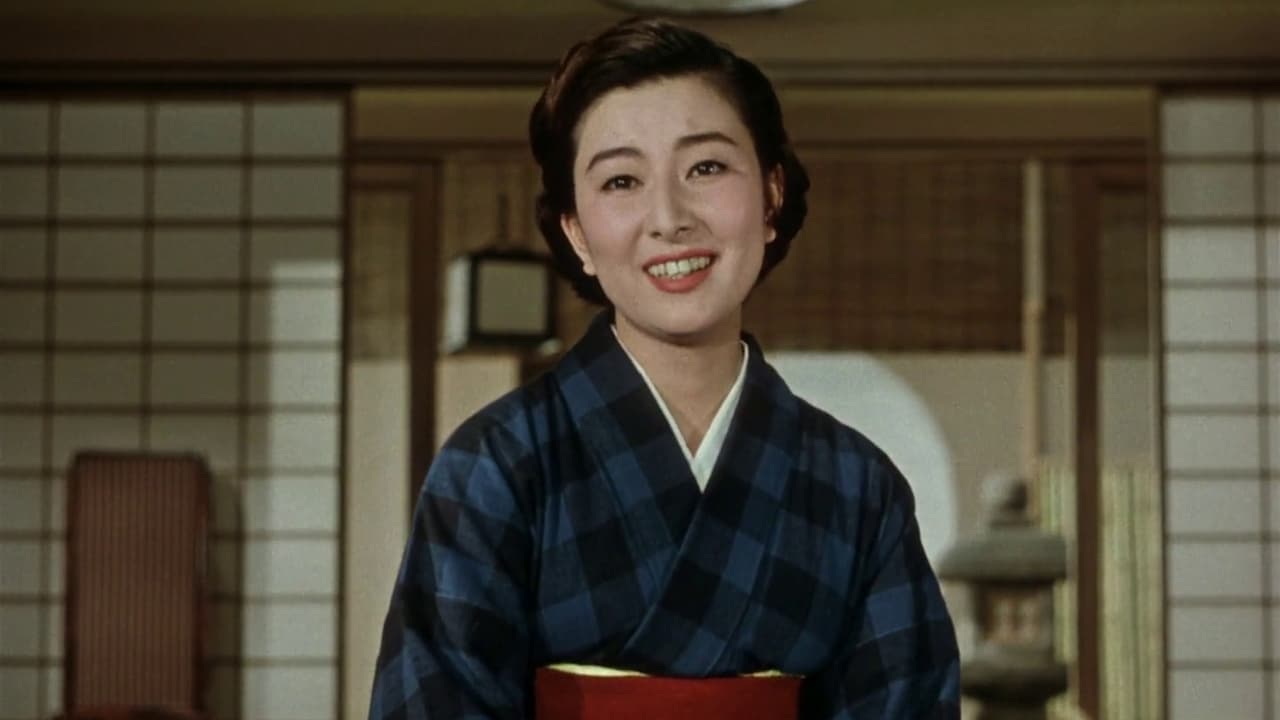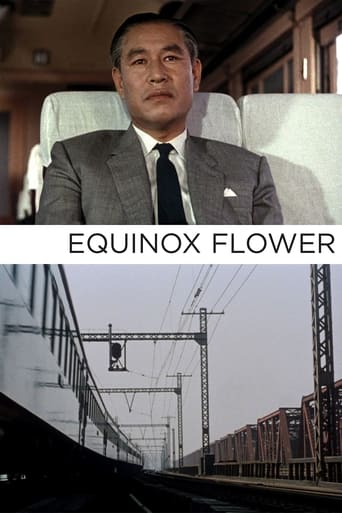

Viewed on DVD. Restoration = ten (10) stars. To paraphrase an old burger chain ad: Where's the movie? Notable actors are present (Kinuyo Tanaka delivers a particularly poignant wordless performance while the younger actresses tend toward hyper line readings). So are the Director's trademarks including: scene padding; "back acting"; clothes lines; ugly overhead electrical lines to power trains; and static camera. The film score seems just right and is delivered in the right places on the sound track. Cinematography (color) and sound are fine. Subtitles are OK. But the film lacks direction BIG time. The Director conveys to the viewer the impression (rightly or wrongly) of having an astounding lack of interest in most of the scenes he is ostensibly directing as well as the film as a whole! Part of the problem seems to stem from a very weak story line and a lackluster script. Set decoration is minimal. Interior sets look terribly familiar and seem to have been little changed over the past 10 years or so. Skip this one or be prepared to be seriously bored. WILLIAM FLANIGAN, PhD.
... View MoreEquinox Flower was Ozu's first color film. He was reluctant to do it, but he shouldn't have been. He handles the addition so well. The colors really do join every scene together. Equinox Flower deals with one father's hypocritical view of love and marriage. It begins at a wedding where Hirayama makes a speech to his friend's daughter. He says how lucky they are to be able to choose their own partner. He does this in front of his wife in a very awkward moment. Hirayama and Kiyoko's relationship is interesting. They make their marriage work, even if there wasn't love there at first. They work together and never feel that they are trapped in this relationship. Despite his new world views during this wedding, once his daughter announces she wishes to marry a man, Hirayama is opposed. His hypocritical views are the cause of much comedy. He is also forced to face his prejudices as he finds a daughter of an old friend who has run away to be with her struggling musician boyfriend. Hirayama is supportive of everyone but his own daughter. Again though, with Ozu's eloquence, Hirayama is not a villain. It is understandable that he has different views concerning his own daughter. A group of men sit around and discuss the differences between sons and daughters. The growth of the whole family is well plotted and emotional. It's another wonderful and gentle deconstruction of Japanese family values.
... View MoreEquinox Flower like many of Ozu's other movies is about generation gap. But Ozu has a different way of showing the generation gap. There is no black or white, but just shades of gray. Even though the parents or the children may be in wrong on some issue, Ozu still wants us to feel sympathy for them. Instead of fights there are slight admonishments and instead of happy reunions there are reconciliations.A large part of reason for that maybe the Japanese culture in which like many other eastern cultures parents are given more respect. But I think Ozu would have been able to make similar kind of films regardless of which culture he belonged to. This is because his films he films have universal values that strike a chord in everybody.Equinox Flower is Ozu's first color film. He resisted for long time to film in color. But the result here is very good. It is also a relatively more modern film. Sake has been replaced with whiskey and beer. And the younger generation is more openly defiant. He has made a very judicious use of colors.What I love most about his most films is the undercurrent of humor that runs throughout. Even though the topic itself is a little soapy, it never feels like that. I always end up smiling at the end of an Ozu film.
... View MoreOzu is such a pleasure, a quiet one, meditative.The story here is about lives, whether they are arranged and what agency we have in arranging them. Many viewers will suppose that the topic was chosen because of some desire to make a comment about Japanese society.No, its because the filmmaker had turned introspective in his later years. His films are characterized by the way the shots are composed. Each one is a matter of absolute perfection. The perfection is so complete, you have to stop and study. You have to rerun certain scenes to see how amazingly the components arrange. He is the ultimate classical Japanese composer. Sometimes you see that the sets must have been especially built for one setup. Pure geometries and symmetries dominate. The camera is always static.The effect is that what you see has nature. Its natural, human. It flows in much the same languid, undramatic way that life does around us. But what we see is that flow in a highly composed context. Every element in that context naturally occurs but seems to have found its own harmony to please the eye of the viewer. Its the cinematic Japanese garden. There's a subtle thing here. Ordered nature presented so that the human composition seems so in tune with nature that we love it. But it is arranged. It is pure and unnatural too, sort of abstractly sublime.This viewer is a Westerner who works with Japanese concepts of ideal, natural harmony. Watching this makes me cry with a pleasure that avoids being joy.Ted's Evaluation -- 3 of 3: Worth watching.
... View More